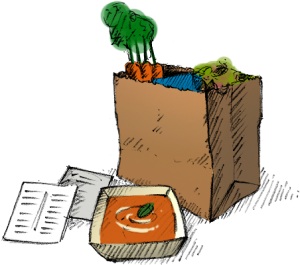Foods 1040 Lessons
| Site: | Joans-place |
| Course: | Foods |
| Book: | Foods 1040 Lessons |
| Printed by: | Guest user |
| Date: | Thursday, 18 September 2025, 1:48 AM |
Description
Your lessons
How to do this Module
Everything you need to hand in for this lesson is included in this check list. Each of the lessons will teach a portion of what you need to complete items on the check list. Please hand in the checklist and all the photos once you have completed the module.
Foods 1040: Meal Planning 1
Checklist for Module Completion
In this Module you need to develop an understanding of planning, budgeting, preparation & evaluation of balanced healthy meals.
Check off each of the following when you have done them.
Here is a link to the Checklist in Word format
Here is a link to upload your completed work
|
I washed my hands before working with food and have included a photo. |
|
|
|
I made sure my workspace was clean before I started and have included a photo. |
|
|
I have gathered the kitchen utensils, tools and ingredients needed for the recipe, before beginning and have included a photo. |
|
|
I have planned a nutritious meal in terms of time to prepare and cost |
|
|
I have looked at Eating Well with Canada’s Food Guide and can describe a healthy meal. |
|
|
I have read the recipes and made measurements carefully |
|
|
I have planned and prepared a breakfast, lunch, dinner and/or a special occasion meal and have included photos. |
|
|
I have ensured my workspace was clean after my cooking was complete and have included a photo. |
|
|
I have had two people,(friends or family) test the meal I have prepared. I have included their comments regarding the following questions: 1. Is the appearance of the meal appetizing? 2. Does the meal taste good? 3. Is there a suggestion for improvement? |
Factors that influence food choices
Lesson Questions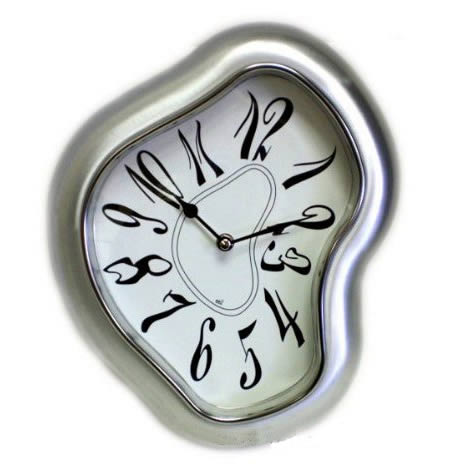
- Describe the planning, time management and budgeting needed to create nutritious meals.
Lesson
"For every minute spent in organizing, an hour is earned."Benjamin Franklin
Since it seems the main reason people give for not creating their own meals at home is time, our first consideration needs to be time management. Organizing saves time and one strategy for organizing is to create a menu plan.
Time Management
A menu plan saves time. No dash to the store for a missing ingredient, no frantic searches through the freezer for something, anything to thaw for dinner. Knowing ahead of time what you're going to prepare really takes the pressure off if you already have a plan, there's so much less to think about that day.

Budget
A menu plan saves money. Reducing trips to the supermarket, a menu plan reduces impulse spending. Using leftovers efficiently cuts food waste, while planned buying in bulk makes it easy to stockpile freezer products at reduced prices.When you plan a weekly menu, you can then make sure you actually will have everything needed to make the meals. Grocery shopping becomes less of a burden because before leaving for the store you can do a quick inventory of what you already have that will be used for the meals you've planned.
One strategy is to keep two grocery lists posted on the fridge:
- regular weekly list, which is mostly for perishable items and add to the perishable grocery list as you plan menus
- pantry list for bulk items and staples and add as you start to get to the bottom of staples such as flour and brown rice
The freezer is your friend. You can store freezables as they go on sale, as well as produce from the garden. When you cook items that freeze well, like soup, chili, spaghetti sauce, and pizza dough, make a double, or even a triple batch, then freeze a meal's worth. Having some homemade meals in the freezer for the really busy days really helps save time!
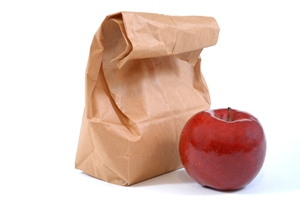
Taking lunches also saves a lot of money, and tends to be a healthier option. Fill containers with leftovers every night after dinner. Then, come morning, you can take the container, add a piece of fruit, and go.
Nutrition
A menu plan improves nutrition. There's time to prepare side dishes and salads to complement the main dish, increasing the family's consumption of fruits and vegetables. Knowing what to serve each day and having the ingredients already on hand makes cooking enjoyable. Creating a menu can be a tremendous help. You can lay out a plan for the week (or two weeks) for what you would like to prepare for dinner. This also helps you to determine how many times you've prepared certain dishes, thus helping you aim for a varied diet.
Skills for successful meal planning
Lesson questions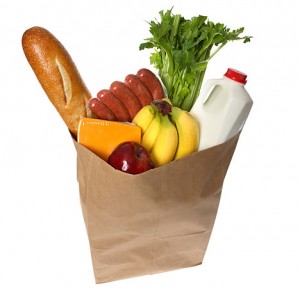
- Describe how to prepare a nutrious weekly menu plan.
- Describe how to shop and stock a pantry with an eye to the budget.
- Expain how to prepare and arttractively present a delicious meal.
Lesson
Weekly Menu Plan
By learning how to plan weekly meals and eating meals at home, you can control your portions and avoid eating hidden calories. In addition, eating meals at home tend to be less expensive and higher in nutrients.
How to Plan Meals – Step by Step
- Get Ideas : When your family is involved in the planning process they'll be more likely to eat what is prepared. It will also be easier to get help with the meal preparation and clean up process if their food preferences are considered. Search for new recipes to get more ideas.
- Make Your List: Make a list of all the main dishes you want to make, as well as foods that you would like to serve but often don’t due to time constraints or missing ingredients. From these, make a plan for the week of which dishes you will actually cook. List the ingredients that you will need to prepare these meals on a shopping list.
- Last Step: Finally, check your pantry and refrigerator to see what you may already have on hand, make adjustments to your list and take your list to the store.
Shopping and Pantry stocking
Do:
- Purchase some produce a few days before it should be ripe and some that is ripe already
- Purchase most of your groceries from the perimeter of the store - that's where the freshest, least processed foods are
- Make a shopping list and stick to it
- Look for foods that are in season
Don't:
- Go to the store hungry
- Buy items you know you will be tempted to over-indulge in
- Shop impulsively
- Expect to find every ingredient all times of year
Maintaining an organized pantry offers many advantages for the menu planner. Keeping stocks of bought-on-sale staples lowers food bills and speeds meal preparation. Always keep staples in the pantry so that you can easily make something for dinner even when you haven’t had time to go to the store. Organize your panty as well so that you can find things quickly. Here is a sample list of things you can easily keep stashed:
- Chicken or vegetable broth
- Beans - a variety
- Pasta - a variety of shapes
- Grains - rice, quinoa, bulgur, cous cous, corn etc.
- Flour - whilte and brown
- Canned tomatoes
- Bread Crumbs
- Sugar
- Peanut butter
- A variety of oils and vinegars
There may be other ingredients you like to use often. If so, keep these in mind when stocking your pantry, refrigerator and freezer.
Meal Preparation
Mise en Place
The phrase 'mise en place' (pronounced 'miz on plas') is a French phrase which means 'everything in place' or 'putting in place'. It refers to all the preparation a cook does before starting to cook. It involves collecting all necessary ingredients for your recipe around your work surface (washed and chopped vegetables, cut meats, spices, liquids, dry ingredients, etc.), and gathering all necessary tools. It also encompases preheating ovens and getting out any other kitchen applicances that may be needed (blenders, food processors, etc.). Doing all of this in advance lets you focus on the cooking process instead of running around looking for ingredients while others burn in the pan. You do not necessarily have to put all of the ingredients in separate bowls, but do have them prepared and readily available, on a plate for instance, or in piles on a cutting board (keeping in mind the rules about raw meats!)
Here are some examples to give you an idea of what mise en place can look like:





Meal Presentation
“You eat first with your eyes” - an old saying and the basis for plating in cusine.
Plating is the art of presenting food in a way that enhances and improves the appeal of the food itself. It involves many different aspects of food preparation and presentation, starting with the combination of foods that make up the meal, to how the food is cooked, to the plate that is used to serve it, to how it is arranged on that plate, to the garnish decorating the dish. Complicated presentations usually miss the point and distract from the wholesomeness of the food. Simplicity is best
Basic Plating Concepts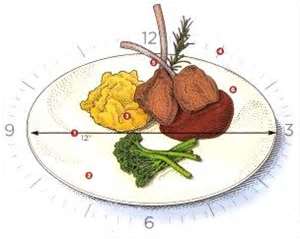
Arrangement: Chefs use white space to strengthen their presentations and so a simple white plate is a good choice.Make sure your serving plates are big enough to let each food item stand out, but small enough that the portions don’t look tiny. If you're serving a protein, starch, and veggies, arrange the three items according to the face of a clock, with starch at 10, meat around 2, and veggies below 9 and 3. Make sure one of the items acts as a focal point on the plate. Center your food and leave the rest clean; that’s the principle of ”white” or “negative” space. White space allows the elements to exist at all and is key to composition. It reinforces the elements of the presentation.
Color: Play with color and texture. Respect natural colors and enhance color by cooking. Small, high contrast elements usually have as much impact as larger, duller elements. For example, if you are serving serving Tomato Soup and Grilled Cheese Sandwiches, a green paper napkin can make this simple meal look really special!
and Grilled Cheese Sandwiches, a green paper napkin can make this simple meal look really special!
Proportion: A guideline for portion in a meal is vegetables should cover about half of the plate, starch one fourth, and protein one fourth.
Balance: The rule of odds is used in many art disciplines, in particular painting, photography and advertising. It states that objects displayed in odd numbers seem to bring unity to a composition. The logic behind this rule is that by displaying, three, five, seven, etc… items instead of even numbers, there is always one item that looks framed by the surrounding ones, which looks harmonious. Even numbers tend to bring symmetry in the composition, which appears less natural. Try plating your food with this idea in mind.
Harmony: Striking a harmony between color, texture, shapes and arrangements form the basis of a stylish food presentation. The food presentation ideas are becoming increasingly flamboyant and artistic but it's best to avoid over-garnishing the dishes. Just be creative in presenting the food. Remember, simple is best.
Planning & preparing a meal
Your assignment is to plan and prepare a breakfast, lunch, dinner and/or a special occasion meal.